
Looking at the top universities ranking Stanford has been consistently among the best technical universities in the world. Therefore, it is no a shock that it has graduated so many well known people. Here we look at the name of some of Stanford University Notable Alumni.
Larry Page
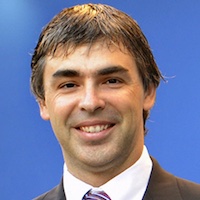
Lawrence Edward Page (born March 26, 1973) is an American software engineer and Internet entrepreneur. He is best known as one of the co-founders of Google along with Sergey Brin. Page is perhaps the most wellkonwn Stanford University Alumni.
Page was the chief executive officer of Alphabet Inc. (Google’s parent company) until stepping down on December 3, 2019. After stepping aside as Google CEO in August 2001 in favor of Eric Schmidt, he re-assumed the role in April 2011. He announced his intention to step aside a second time in July 2015 to become CEO of Alphabet, under which Google’s assets would be reorganized. Under Page, Alphabet sought to deliver major advancements in a variety of industries. On December 4, 2019, Page stepped down from his CEO position from Alphabet. Both Page and Sergey Brin remain at Alphabet as co-founders, board members, employees, and controlling shareholders.
Forbes placed him 10th in the list “Billionaires 2019”. As of March 2020, Page is the 13th-richest person in the world, with a net worth of $62.6 billion, according to Forbes. He is the co-inventor and namesake of PageRank, a search ranking algorithm for Google, which he wrote with Brin. Page received the Marconi Prize in 2004 with Brin.
Awards and accolades
PC Magazine has praised Google as among the Top 100 Web Sites and Search Engines (1998) and awarded Google the Technical Excellence Award for Innovation in Web Application Development in 1999. In 2000, Google earned a Webby Award, a People’s Voice Award for technical achievement, and in 2001, was awarded Outstanding Search Service, Best Image Search Engine, Best Design, Most Webmaster Friendly Search Engine, and Best Search Feature at the Search Engine Watch Awards.
In 2002, Page was named a World Economic Forum Global Leader for Tomorrow and along with Brin, was named by the Massachusetts Institute of Technology (MIT)’s Technology Review publication as one of the top 100 innovators in the world under the age of 35, as part of its yearly TR100 listing (changed to “TR35” after 2005).
In 2003, both Page and Brin received an MBA from IE Business School, in an honorary capacity, “for embodying the entrepreneurial spirit and lending momentum to the creation of new businesses.”
In 2004, they received the Marconi Foundation’s prize and were elected Fellows of the Marconi Foundation at Columbia University. In announcing their selection, John Jay Iselin, the Foundation’s president, congratulated the two men for “their invention that has fundamentally changed the way information is retrieved today.”
In 2004, Page and Brin received the Golden Plate Award of the American Academy of Achievement.
Page and Brin were also Award Recipients and National Finalists for the EY Entrepreneur of the Year Award in 2003.
Also in 2004, X PRIZE chose Page as a trustee of their board[122] and he was elected to the National Academy of Engineering.
In 2005, Brin and Page were elected Fellows of the American Academy of Arts and Sciences.
In 2008 Page received the Communication Award from Prince Felipe at the Prince of Asturias Awards on behalf of Google.
In 2009, Page received an honorary doctorate from the University of Michigan during a graduation commencement ceremony.
In 2011, he was ranked 24th on the Forbes list of billionaires, and as the 11th richest person in the U.S.
In 2015, Page’s “Powerful People” profile on the Forbes site states that Google is “the most influential company of the digital era”.
As of July 2014, the Bloomberg Billionaires Index lists Page as the 17th richest man in the world, with an estimated net worth of $32.7 billion.
At the completion of 2014, Fortune magazine named Page its “Businessperson of the Year”, declaring him “the world’s most daring CEO”.
In October 2015, Page was named number one on the Forbes “America’s Most Popular Chief Executives” list, as voted by Google’s employees.
In August 2017, Page was awarded honorary citizenship of Agrigento, Italy.
Sergey Brin
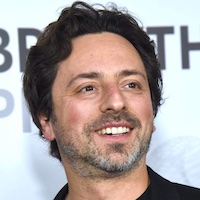
Sergey Mikhaylovich Brin (born August 21, 1973) is an American software engineer and Internet entrepreneur. Together with Larry Page, he co-founded Google. Brin was the president of Google’s parent company Alphabet Inc, until stepping down from the role on December 3, 2019. Brin and Larry Page remain at Alphabet as co-founders, controlling shareholders, board members, and employees. As of October 2019, Brin is the 14th-richest person in the world, with an estimated net worth of US$48.5 billion.
Brin immigrated to the United States with his family from the Soviet Union at the age of six. He earned his bachelor’s degree at the University of Maryland, College Park, following in his father’s and grandfather’s footsteps by studying mathematics, as well as computer science. After graduation, he enrolled in Stanford University to acquire a Ph.D. in computer science. There he met Page, with whom he built a web search engine. The program became popular at Stanford, and they suspended their Ph.D. studies to start up Google in Susan Wojcicki’s garage in Menlo Park.
Awards and accolades
In 2002, Brin, along with Larry Page, was named the MIT Technology Review TR100, as one of the top 100 innovators in the world under the age of 35.
In 2003, both Brin and Page received an honorary MBA from IE Business School “for embodying the entrepreneurial spirit and lending momentum to the creation of new businesses…”.
In 2004, they received the Marconi Foundation Prize, the “Highest Award in Engineering”, and were elected Fellows of the Marconi Foundation at Columbia University. “In announcing their selection, John Jay Iselin, the Foundation’s president, congratulated the two men for their invention that has fundamentally changed the way information is retrieved today.”
In 2003, Brin and Page were both Award Recipients and National Finalists for the EY Entrepreneur of the Year Award
In 2004, Brin received the American Academy of Achievement’s Golden Plate Award with Larry Page at a ceremony in Chicago, Illinois.
In November 2009, Forbes decided Brin and Page were the fifth most powerful people in the world.
Earlier that same year, in February, Brin was inducted into the National Academy of Engineering, which is “among the highest professional distinctions accorded to an engineer … [and] honors those who have made outstanding contributions to engineering research, practice…”. He was selected specifically, “for leadership in development of rapid indexing and retrieval of relevant information from the World Wide Web”.
In their “Profiles” of Fellows, the National Science Foundation included a number of earlier awards: he was a featured speaker at the World Economic Forum and the Technology, Entertainment and Design Conference. … PC Magazine has praised Google in the Top 100 Web Sites and Search Engines (1998) and awarded Google the Technical Excellence Award, for Innovation in Web Application Development in 1999. In 2000, Google earned a Webby Award, a People’s Voice Award for technical achievement, and in 2001, was awarded Outstanding Search Service, Best Image Search Engine, Best Design, Most Webmaster Friendly Search Engine, and Best Search Feature at the Search Engine Watch Awards.
As of October 2018, Brin is the 13th-richest person in the world according to Forbes, with an estimated net worth of US$50.5 billion.
Reid Hoffman
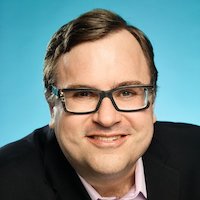
Reid Garrett Hoffman (born August 5, 1967) is an American internet entrepreneur, venture capitalist and author. Hoffman was the co-founder and executive chairman of LinkedIn, a business-oriented social network used primarily for professional networking. He is currently a partner at the venture capital firm Greylock Partners. On the Forbes 2021 list of the world’s billionaires, Hoffman was ranked #1580 with a net worth of US$2.4 billion.
Career
Hoffman’s first job was an internship at Inglenook, a winery in Napa Valley. He later joined Apple Computer in 1994, where he worked on eWorld, an early attempt at creating a social network. eWorld was acquired by AOL in 1996. He later worked at Fujitsu before co-founding his first company – SocialNet.com in 1997. It focused “on online dating and matching up people with similar interests, like golfers who were looking for partners in their neighborhood. While at SocialNet, Hoffman was a member of the board of directors during the founding of PayPal, an electronic money transmission service. In January 2000, he left SocialNet and joined PayPal full-time as the company’s COO. At the time of PayPal’s acquisition by eBay for $1.5B in 2002, he was executive vice president of PayPal. Hoffman co-founded LinkedIn in December 2002 with two former colleagues from SocialNet. By November 2014, LinkedIn had over 332 million members in more than 200 countries and territories. Hoffman was LinkedIn’s founding CEO for the first four years before becoming chairman and president of products in February 2007. He became executive chairman in June 2009. Microsoft proposed to acquire LinkedIn on June 13, 2016 for $26.2 billion in cash. Hoffman became a Microsoft board member on March 14, 2017.
Investing
After the PayPal sale to eBay, Hoffman became one of Silicon Valley’s most prolific and successful angel investors. According to venture capitalist David Sze, Hoffman “is arguably the most successful angel investor in the past decade.” Dave Goldberg, former CEO of SurveyMonkey, said that Hoffman “is the person you want to talk to when you are starting a company.” In 2010 Hoffman joined Greylock Partners and runs their $20 million Discovery Fund. His areas of focus at Greylock include consumer and services, enterprise software, consumer Internet, enterprise 2.0, mobile, social gaming, online marketplaces, payments, and social networks. According to David Kirkpatrick’s book The Facebook Effect, Hoffman arranged the first meeting between Mark Zuckerberg and Peter Thiel, which led to Thiel’s initial $500,000 angel investment in Facebook. Hoffman invested alongside Thiel in Facebook’s first financing round. An early advocate for cryptocurrency, Hoffman led the 2014 Series A financing round in Xapo, a company that created a combination between a bitcoin vault and a bitcoin wallet and was an early supporter of Celo, an open platform that makes financial tools accessible to anyone with a mobile phone.
Honors and awards
2017: appointed an Honorary Commander of the Order of the British Empire (CBE), “For services to promoting UK business and social networking and the Marshall Scholarship scheme”.
2014: the American Academy of Achievement awarded Hoffman with the annual Golden Plate award, which honors accomplished individuals “for significant achievement in their fields.”
2014: President Barack Obama named Hoffman as a Presidential Ambassador for Global Entrepreneurship “to help develop the next generation of entrepreneurs.”
2014: received the Distinguished Citizen Award from the Commonwealth Club.
2012: was ranked third on the Forbes Midas List of the top tech investors. Forbes described Hoffman as “Silicon Valley’s uber-investor” and said Hoffman “has had a hand in creating nearly every lucrative social media startup.”
2012: The Martin Luther King Jr. Center honored Hoffman with their “Salute to Greatness” award which “recognizes individuals and corporations or organizations that exemplify excellence in leadership and a commitment to social responsibility in the spirit of Martin Luther King, Jr.”
2012: Newsweek and The Daily Beast released their first “Digital Power Index,” a list of the 100 most significant people in the digital world that year (plus 10 additional “Lifetime Achievement” winners), and Hoffman was ranked No. 3 in the “Angels” category.
2012: Hoffman, along with Salman Khan of Khan Academy, was honored by the World Affairs Council and Global Philanthropy Forum in 2012. The council recognizes and honors remarkable leaders who have effected and will continue to effect social change through their private enterprise and social action. The awards in 2012 were dedicated to celebrating Technology for Social Impact.
2012: Hoffman was awarded the 2012 David Packard Medal of Achievement Award by TechAmerica for his contributions and advances within the high-tech industry, his community, and humankind.
2012: Hoffman received an Honorary Doctor of Laws from Babson in 2012.
2011: Hoffman and Jeff Weiner of LinkedIn shared the EY U.S. Entrepreneur of the Year Award.
2010: Hoffman was named No. 17 on Fast Company ’s list of the 100 Most Creative People in Business.
Phil Knight
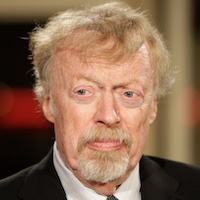
Philip Hampson Knight (born February 24, 1938) is an American billionaire businessman. He is the co-founder and chairman emeritus of Nike, Inc., and was previously chairman and CEO of the company. As of July 23, 2020, Knight was ranked by Forbes as the 24th richest person in the world, with an estimated net worth of US$50.7 billion. He is also the owner of the stop motion film production company Laika. Knight is a graduate of the University of Oregon and Stanford Graduate School of Business. He ran track under coach Bill Bowerman at the University of Oregon, with whom he would co-found Nike.
Career
Before Blue Ribbon Sports—later Nike—flourished, Knight was a CPA, first with Coopers & Lybrand, and then Price Waterhouse. Knight then became an accounting professor at Portland State University. Immediately after graduating from the University of Oregon, Knight enlisted in the army and served one year on active duty and seven years in the Army Reserve. He next enrolled at Stanford Graduate School of Business, where, for his small business class, Knight produced a paper, “Can Japanese Sports Shoes Do to German Sports Shoes What Japanese Cameras Did to German Cameras?”, that essentially premised his eventual foray into selling running shoes. His ambition was to import high-quality and low-cost running shoes from Japan into the American market. He graduated with a master’s degree in business administration from Stanford in 1962.
Knight set out on a trip around the world after graduation, during which he made a stop in Kobe, Japan, in November 1962. It was there that he discovered Tiger brand running shoes, manufactured in Kobe by the Onitsuka Co., now known as Asics. Impressed by the quality and low cost of the shoes, Knight called Mr. Onitsuka, who agreed to meet with him. By the end of the meeting, Knight had secured Tiger distribution rights for the western United States.
The first Tiger samples would take more than a year to be shipped to Knight; during that time he found a job as an accountant in Portland. When Knight finally received the shoe samples, he mailed two pairs to Bowerman at the University of Oregon, hoping to gain both a sale and an influential endorsement. To Knight’s surprise, Bowerman not only ordered the Tiger shoes, but also offered to become a partner with Knight and provide product design ideas. The two men agreed to a partnership by handshake on January 25, 1964, the birth date of Blue Ribbon Sports, the company that would later become Nike.
Jeff Johnson, Nike’s first employee, suggested calling the firm “Nike,” named after the Greek winged goddess of victory, and Blue Ribbon Sports was subsequently renamed Nike in 1978.
Nike’s “swoosh” logo, now considered one of the most valuable logos in the world, was commissioned for $35 from graphic design student Carolyn Davidson in 1971. According to Nike’s website, Knight said at the time: “I don’t love it, but it will grow on me.” In September 1983, Davidson was given an undisclosed amount of Nike stock for her contribution to the company’s brand.
Sally Ride
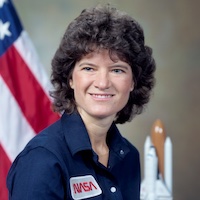
Sally Kristen Ride (May 26, 1951 – July 23, 2012) was an American physicist and astronaut. Born in Los Angeles, she joined NASA in 1978 and became the first American woman in space in 1983. Ride was the third woman in space overall, after USSR cosmonauts Valentina Tereshkova (1963) and Svetlana Savitskaya (1982. Ride remains the youngest American astronaut to have traveled to space, having done so at the age of 32.
After flying twice on the Orbiter Challenger, she left NASA in 1987. She worked for two years at Stanford University’s Center for International Security and Arms Control, then at the University of California, San Diego as a professor of physics, primarily researching nonlinear optics and Thomson scattering. She served on the committees that investigated the Challenger and Columbia space shuttle disasters, the only person to participate in both. Ride directed public outreach and educational programs for NASA’s GRAIL mission, which sent twin satellites to map the moon’s gravity. On December 17, 2012, the two GRAIL probes, Ebb and Flow, were directed to complete their mission by crashing on an unnamed lunar mountain near the crater Goldschmidt. NASA announced that it was naming the landing site in honor of Sally Ride. Flying magazine ranked Ride at number 50 on their list of the “51 Heroes of Aviation” in 2013.
Ride attended Portola Junior High (now Portola Middle School) and then Birmingham High School before graduating from the private Westlake School for Girls in Los Angeles on a scholarship. In addition to being interested in science, she was a nationally ranked tennis player, and took a break from college to pursue a professional tennis career. Ride attended Swarthmore College for three semesters, took physics courses at University of California, Los Angeles, and then entered Stanford University as a junior, graduating with a bachelor’s degree in English and physics. At Stanford, she earned a master’s degree in 1975 and a PhD in physics in 1978 while doing research on the interaction of X-rays with the interstellar medium. Astrophysics and free electron lasers were her specific areas of study.
Career at NASA
Ride was selected to be an astronaut as part of NASA Astronaut Group 8, in 1978, the first class to select women. She applied after seeing an advertisement in the Stanford student newspaper, and was one of only 35 people selected out of the 8000 applications. After graduating training in 1979, becoming eligible to work as a mission specialist she served as the ground-based capsule communicator for the second and third Space Shuttle flights, and helped develop the Space Shuttle’s “Canadarm” robot arm. Prior to her first space flight, Ride was subject to media attention due to her gender. During a press conference, she was asked questions such as, “Will the flight affect your reproductive organs?” and “Do you weep when things go wrong on the job?” Despite this and the historical significance of the mission, Ride insisted that she saw herself in only one way—as an astronaut.
On June 18, 1983, Ride became the first American woman in space as a crew member on Space Shuttle Challenger for STS-7. Many of the people attending the launch wore T-shirts bearing the words “Ride, Sally Ride”, lyrics from Wilson Pickett’s song “Mustang Sally”.[3] The purpose of the mission was to deploy two communications satellites and the first Shuttle Pallet Satellite (SPAS-1), conduct experiments within the cargo bay, and test the TDRS satellite. SPAS-1 was successfully deployed, underwent experiments, then recollected and brought back to Earth. Part of Ride’s job was to operate the robotics arm to deploy and retrieve SPAS-1.
Awards and honors
Ride received numerous awards throughout her lifetime and after. She received the National Space Society’s von Braun Award, the Lindbergh Eagle, and the NCAA’s Theodore Roosevelt Award. She was inducted into the National Women’s Hall of Fame and the Astronaut Hall of Fame and was awarded the NASA Space Flight Medal twice. Two elementary schools in the United States are named after her: Sally Ride Elementary School in The Woodlands, Texas, and Sally Ride Elementary School in Germantown, Maryland.
1984: Ride received the Samuel S. Beard Award for Greatest Public Service by an Individual 35 Years or Under, an award given out annually by Jefferson Awards.
2006: On December 6, 2006, California Governor Arnold Schwarzenegger and First Lady Maria Shriver inducted Ride into the California Hall of Fame at the California Museum for History, Women, and the Arts.
2007: Ride was inducted into the National Aviation Hall of Fame in Dayton, Ohio.
2012: Ride directed public outreach and educational programs for NASA’s GRAIL mission, which sent twin satellites to map the moon’s gravity. On December 17, 2012, the two GRAIL probes, Ebb and Flow, were directed to complete their mission by crashing on an unnamed lunar mountain near the crater Goldschmidt. NASA announced that it was naming the landing site in honor of Sally Ride.
2012: In December 2012, the Space Foundation bestowed upon Ride its highest honor, the General James E. Hill Lifetime Space Achievement Award.
2013: In April 2013, the U.S. Navy announced that a research ship would be named in honor of Ride. This was done in 2014 with the christening of the oceanographic research vessel RV Sally Ride (AGOR-28).
2013: On May 20, 2013, a “National Tribute to Sally Ride” was held at the John F. Kennedy Center for the Performing Arts in Washington, D.C. and on that same day, President Barack Obama announced that Ride would receive the Presidential Medal of Freedom, the highest civilian award in the United States. The medal was presented to her life partner Tam O’Shaughnessy in a ceremony at the White House on November 20, 2013. In July 2013, Flying magazine ranked Ride at number 50 on their list of the “51 Heroes of Aviation”.
2014: Ride was inducted into the Legacy Walk, an outdoor public display in Chicago that celebrates LGBT history and people.
2017: A Google Doodle honored her on International Women’s Day.
2018: The U.S. Postal Service issued a first-class postage stamp honoring Ride.
2019: Stanford University’s Serra House located in Lucie Stern Hall was renamed the Sally Ride House.
2022: Ride will appear as one of the first two honorees of the American Women quarters series in 2022. She will be the first known LGBT person to appear on US currency.
Reed Hastings
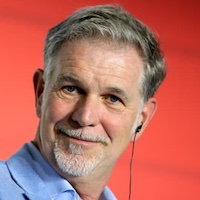
Wilmot Reed Hastings Jr. (born October 8, 1960) is an American businessman. He is the co-founder, chairman, and co-chief executive officer (CEO) of Netflix, and sits on a number of boards and non-profit organizations. Hastings attended Stanford University, after being rejected from his first choice MIT, graduating in 1988 with a Master’s Degree in Computer Science.
Career
Hastings’ first job was at Adaptive Technology, where he created a tool for debugging software. He met Audrey MacLean in 1990 when she was CEO at Adaptive Corp. In 2007, Hastings told CNN, “From her, I learned the value of focus. I learned it is better to do one product well than two products in a mediocre way.”. Hastings left Adaptive Technology in 1991 to lay the foundation to his first company, Pure Software, which produced products to troubleshoot software. As his engineering background didn’t prepare him for the challenges of being a CEO, he asked his board to replace him, stating he was losing confidence. The board refused, and Hastings says he learned to be a businessman. Pure Software was taken public by Morgan Stanley in 1995. In 1996, Pure Software announced a merger with Atria Software. In 1997, the combined company, Pure Atria, was acquired by Rational Software, which triggered a 42% drop in both companies’ stocks after the deal was announced. Hastings was appointed Chief Technical Officer of the combined companies and left soon after the acquisition. After Pure Software, Hastings spent two years thinking about how to avoid similar problems at his next startup.
In 1997, Hastings and former Pure Software employee Marc Randolph co-founded Netflix, offering flat rate movie rental-by-mail to customers in the US by combining two emerging technologies; DVDs, which were much easier to send as mail than VHS-cassettes, and a website to order them from, instead of a paper catalogue. Headquartered in Los Gatos, California, Netflix has amassed a collection of 100,000 titles and more than 100 million subscribers. Hastings had the idea for Netflix after he left Pure Software. “I had a big late fee for Apollo 13. It was six weeks late and I owed the video store $40. I had misplaced the cassette. It was all my fault. I didn’t want to tell my wife about it. And I said to myself, ‘I’m going to compromise the integrity of my marriage over a late fee?’ Later, on my way to the gym, I realized they had a much better business model. You could pay $30 or $40 a month and work out as little or as much as you wanted.” As Netflix grew, the company was noticed for its innovative management practices—the results of the culture Hastings was exploring—called “Freedom and Responsibility.” Netflix reportedly offers mediocre employees large severance packages to ensure that employees are consistently working to further the company’s innovative environment. Netflix has eliminated sick and vacation time for employees, and instead allows them to manage their time off individually. In September 2020, Hastings and Erin Meyer co-authored a book on Netflix’s culture and management principles with interviews from current and former employees. No Rules Rules: Netflix and the Culture of Reinvention was a New York Times bestseller, featured on year-end lists for publications such as NPR and The Economist. It was shortlisted for the Financial Times and McKinsey Business Book of the Year Award.
Hastings is a proponent of Internet television and sees it as the future. He credits YouTube for his shift in strategy for developing a video streaming service. Netflix launched a service in 2007 to stream movies and television shows to computers.
Hastings was a director of Facebook, Inc. since June 2011 to April 2019, and was on the board of Microsoft from 2007 to 2012.
Peter Thiel
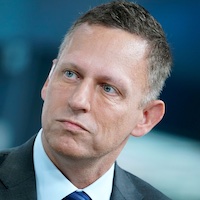
Peter Andreas Thiel (born 11 October, 1967) is a German-American billionaire entrepreneur and venture capitalist. A co-founder of PayPal, Palantir Technologies, and Founders Fund, he was the first outside investor in Facebook. He was ranked No. 4 on the Forbes Midas List of 2014, with a net worth of $2.2 billion, and No. 391 on the Forbes 400 in 2020, with a net worth of $2.1 billion. As of October 2021, Thiel has an estimated net worth of $6.92 billion and was ranked 410th on the Bloomberg Billionaires Index.
Born in Frankfurt, he moved with his family to the United States as an infant. He spent a portion of his upbringing in Southern Africa before the family settled in California in 1977. He studied philosophy at Stanford University, graduating with a B.A. in 1989. He then earned his J.D. from Stanford Law School in 1992. After graduation, he worked as a judicial law clerk for Judge James Larry Edmondson of the U.S. Court of Appeals for the Eleventh Circuit, as a securities lawyer for Sullivan & Cromwell, as a speechwriter for former-U.S. Secretary of Education William Bennett, and as a derivatives trader at Credit Suisse. He founded Thiel Capital Management in 1996. He co-founded PayPal with Max Levchin and Luke Nosek in 1998, serving as chief executive officer until its sale to eBay in 2002 for $1.5 billion.
After PayPal, he founded Clarium Capital, a global macro hedge fund based in San Francisco. In 2004, he launched Palantir Technologies, a big data analysis company, and served as its chairman through 2019. In 2005, he launched Founders Fund with PayPal partners Ken Howery and Luke Nosek. Earlier, Thiel became Facebook’s first outside investor when he acquired a 10.2% stake for $500,000 in August 2004. He sold the majority of his shares in Facebook for over $1 billion in 2012, but remains on the board of directors. He co-founded Valar Ventures in 2010; co-founded Mithril Capital, serving as investment committee chair, in 2012; and served as a part-time partner at Y Combinator from 2015 to 2017.
Through the Thiel Foundation, Thiel governs the grant-making bodies Breakout Labs and Thiel Fellowship, and funds nonprofit research into artificial intelligence, life extension, and seasteading. In 2016, Thiel confirmed that he had funded Hulk Hogan in the Bollea v. Gawker lawsuit because Gawker had previously outed him as gay. The lawsuit eventually bankrupted Gawker. A co-founder of The Stanford Review, he is a conservative libertarian who is critical of high government spending, high debt levels, and foreign wars. He has donated to over 50 political figures on the American Right, including Donald Trump and Meg Whitman.
Career
After graduating from Stanford Law School, Thiel clerked for Judge James Larry Edmondson of the United States Court of Appeals for the 11th Circuit. Thiel then worked as a securities lawyer for Sullivan & Cromwell in New York. He left the law firm after seven months. He then took a job as a derivatives trader in currency options at Credit Suisse. He joined them in 1993 while also working as a speechwriter for former United States Secretary of Education William Bennett, before returning to California in 1996 to seek a more meaningful occupation.
Upon returning to the Bay Area, Thiel noticed that the development of the internet and personal computer had launched the dot-com boom. With financial support from friends and family, he raised $1 million toward the establishment of Thiel Capital Management and embarked on his venture capital career. Early on, he experienced a setback after investing $100,000 in his friend Luke Nosek’s unsuccessful web-based calendar project. His luck changed when Nosek’s friend Max Levchin introduced him to his cryptography-related company idea, which later became their first venture called Confinity in 1998.
With Confinity, Thiel realized they could develop software to bridge a gap in making online payments. Although the use of credit cards and expanding automated teller machine networks provided consumers with more payment options, not all merchants had the necessary hardware to accept credit cards. Thus, consumers had to pay with exact cash or check. Thiel wanted to create a type of digital wallet for consumer convenience and security by encrypting data on digital devices, and in 1999 Confinity launched PayPal. PayPal promised to open up new possibilities for handling money. PayPal then continued to grow through mergers in 2000 with Elon Musk’s online financial services company X.com, and with Pixo, a company specializing in mobile commerce. PayPal went public on 15 February 2002 and was sold to eBay for $1.5 billion in October of that year. Thiel remained CEO of the company until the sale. His 3.7% stake in the company was worth $55 million at the time of acquisition. In Silicon Valley circles, Thiel is colloquially referred to as the “Don of the PayPal Mafia”.
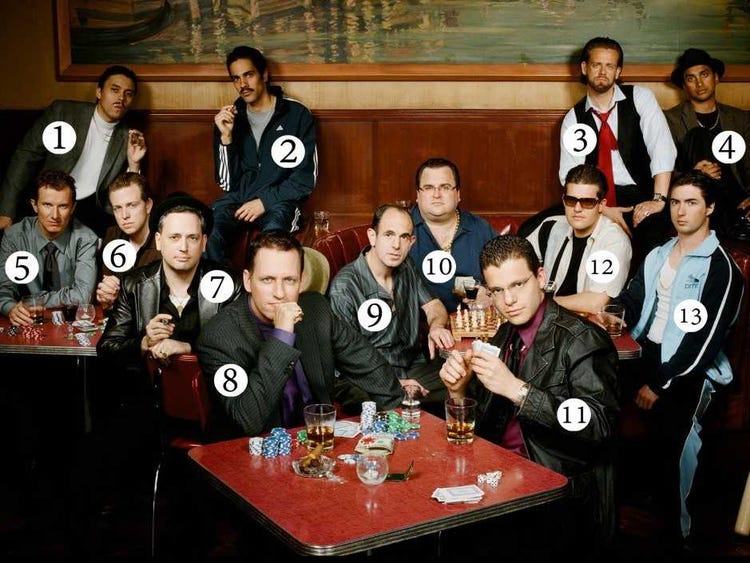
Thiel used $10 million of his proceeds to create Clarium Capital Management, a global macro hedge fund focusing on directional and liquid instruments in currencies, interest rates, commodities, and equities. In 2003, Thiel successfully bet that the United States dollar would weaken. In 2004, Thiel spoke of the dot-com bubble having migrated, in effect, into a growing bubble in the financial sector, and specified General Electric and Walmart as vulnerable. In 2005, Clarium saw a 57.1% return as Thiel predicted that the dollar would rally. However, Clarium faltered in 2006 with a 7.8% loss. During this time, the firm sought to profit in the long-term from its petrodollar analysis, which foresaw the impending decline in oil supplies and the unsustainable bubble growing in the U.S. housing market. Clarium’s assets under management grew after achieving a 40.3% return in 2007 to more than $7 billion by 2008, but fell as financial markets collapsed near the start of 2009. By 2011, after missing out on the economic rebound, many key investors pulled out, reducing the value of Clarium’s assets to $350 million, two thirds of which was Thiel’s money.
In May 2003, Thiel incorporated Palantir Technologies, a big data analysis company named after the Tolkien artifact. He continues to serve as its chairman as of 2021. He envisioned Palantir as providing data mining services to government intelligence agencies that were maximally unintrusive and traceable. Palantir’s first backer was the Central Intelligence Agency’s venture capital arm In-Q-Tel, but the company steadily grew and in 2015 was valued at $20 billion. Thiel was the company’s largest shareholder
In August 2004, Thiel made a $500,000 angel investment in Facebook for a 10.2% stake in the company and joined Facebook’s board. This was the first outside investment in Facebook, and valued the company at $4.9 million. As a board member, Thiel was not actively involved in Facebook’s operations. He provided help with timing the various rounds of funding and Zuckerberg credited Thiel with helping him time Facebook’s 2007 Series D, which closed before the 2008 financial crisis.
In 2005, Thiel created Founders Fund, a San Francisco-based venture capital fund. In addition to Facebook, Thiel made early-stage investments in numerous startups (personally or through Founders Fund), including Airbnb, Slide.com, LinkedIn, Friendster, Geni.com, Yammer, Yelp Inc., Spotify, SpaceX, Palantir Technologies, Asana, Quora, Nanotronics Imaging, Rypple, TransferWise, and Stripe.
In 2017, Founders Fund bought about $15–20 million worth of bitcoin. In January 2018, the firm told investors that due to the cryptocurrency’s surge the holdings were worth hundreds of millions of dollars.
Rachel Maddow
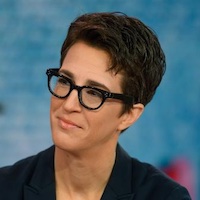
Rachel Anne Maddow (born April 1, 1973) is an American television news program host and liberal political commentator. Maddow hosts The Rachel Maddow Show, a nightly television show on MSNBC, and serves as the cable network’s special event co-anchor alongside Brian Williams. Her syndicated talk radio program of the same name aired on Air America Radio from 2005 to 2010. Maddow has received multiple Emmy Awards for her broadcasting work and in 2021 received a Grammy Award for Best Spoken Word Album for her book Blowout (2019).
Maddow holds a bachelor’s degree in public policy from Stanford University and a doctorate in political science from Oxford University and is the first openly lesbian anchor to host a major prime-time news program in the United States. Asked about her political views by the Valley Advocate, Maddow replied, “I’m undoubtedly a liberal, which means that I’m in almost total agreement with the Eisenhower-era Republican Party platform.”
Career
Maddow’s first job as a radio host was in 1999 at WRNX (100.9 FM) in Holyoke, Massachusetts. She entered and won a contest the station held to find a new second lead for the show’s principal host, Dave Brinnel. After the WRNX show, she hosted Big Breakfast on WRSI in Northampton, Massachusetts, for two years, leaving in 2004 to join the new Air America to host Unfiltered until its cancellation in March 2005. Two weeks after the cancellation of Unfiltered in April 2005, Maddow’s weekday two-hour radio program, The Rachel Maddow Show, began airing; in March 2008.
In June 2005, Maddow became a regular panelist on the MSNBC show Tucker, hosted by Tucker Carlson. During and after the November 2006 election, she was a guest on CNN’s Paula Zahn Now; she was also a correspondent for The Advocate Newsmagazine, an LGBT-oriented short-form newsmagazine for Logo deriving from news items published by The Advocate. In January 2008, Maddow became an MSNBC political analyst and was a regular panelist on MSNBC’s Race for the White House with David Gregory and MSNBC’s election coverage as well as a frequent contributor on Countdown with Keith Olbermann.
In 2008, Maddow was the substitute host for Countdown with Keith Olbermann, her first time hosting a program on MSNBC. Maddow described herself on-air as “nervous”. Keith Olbermann complimented her work, and she was brought back to host Countdown the next month. The show she hosted was the highest-rated news program among people aged 25 to 54. For her success, Olbermann ranked Maddow third in his show’s segment “World’s Best Persons”. In July 2008, Maddow filled in again for several broadcasts. Maddow also filled in for David Gregory as host of Race for the White House. Olbermann began to push for Maddow to gain her own show at MSNBC, and he was eventually able to persuade Phil Griffin to give her Dan Abrams’ time slot.
In mid-May 2017, MSNBC surpassed CNN and Fox News in the news ratings. For the week of May 15, The Rachel Maddow Show was the No. 1 non-sports program on cable for the first time. She has been called by Rolling Stone as “America’s wonkiest anchor”.
Writing
Maddow wrote Drift: The Unmooring of American Military Power (2012) about the role of the military in postwar American politics. Upon its release, Drift reached the first position of The New York Times Best Seller list for hardcover nonfiction. In December 2013, The Washington Post announced that Maddow would write a monthly opinion column for the paper. On March 2, 2018, The New York Times published Maddow’s first crossword puzzle, in collaboration with Joe DiPietro. On the eve of its publication, she said: “This is kind of it, like there will never be a baby, but there’s this freaking crossword puzzle, and I am very, very excited about it.” Maddow’s second book Blowout: Corrupted Democracy, Rogue State Russia, and the Richest, Most Destructive Industry on Earth was published in October 2019. In March 2021, the audiobook version of Blowout, recorded by Maddow, won the Grammy Award for Best Spoken Word Album at the 63rd Annual Grammy Awards. Her third book, Bag Man: The Wild Crimes, Audacious Cover-up, and Spectacular Downfall of a Brazen Crook in the White House, written with Michael Yarvitz, was published in December 2020. It is based on her podcast Bagman about Vice President Spiro Agnew and the corruption scandal that led to his resignation in 1973.
Honors and awards
2021: Fast Company included her on their second Queer 50 list.
2017: Emmy Award in the Outstanding Live Interview category for The Rachel Maddow Show segment “One-on-One with Kellyanne Conway”.
2017: Emmy Award in the Outstanding News Discussion & Analysis category for The Rachel Maddow Show story “An American Disaster: The Crisis in Flint”.
2017: her MSNBC show won two Emmy Awards, for coverage of the tainted water crisis in Flint, Michigan, and for Maddow’s interview with White House counselor Kellyanne Conway.
2017: The Advocate named her as a finalist for its “Person of the Year”.
2012: Maddow was presented the John Steinbeck Award by the Martha Heasley Cox Center for Steinbeck Studies at San Jose State University.
2012: Maddow was named Outstanding Host at the 2012 Gracie Allen Awards.
2011: Emmy Award in the Outstanding News Discussion & Analysis category for The Rachel Maddow Show segments “Good Morning Landlocked Central Asia!”.
2010: Maddow won at the 21st Annual GLAAD Media Awards in the category of Outstanding TV Journalism – Newsmagazine for her segment, “Uganda Be Kidding Me”.
2010: Maddow was the 2010 commencement speaker and was given an honorary Doctor of Laws (LLD) degree at Smith College in Northampton, Massachusetts.
2010: Maddow was presented with a Maggie Award for her ongoing reporting of healthcare reform, the murder of Dr. George Tiller, and the anti-abortion movement.
2010: Maddow won the Walter Cronkite Faith & Freedom Award, which was presented by the Interfaith Alliance. Past honorees included Larry King, Tom Brokaw, and the late Peter Jennings.
2009: Maddow won a Gracie Award, presented by the American Women in Radio and Television.
2009: Maddow was nominated for GLAAD’s 20th Annual Media Awards for a segment of her MSNBC show, “Rick Warren, Change To Believe In?”, in the Outstanding TV Journalism Segment category.
2009: Maddow received a Proclamation of Honor from the California State Senate, presented in San Francisco by California State Senator Mark Leno.
2009: she was listed at No. 4 in Out magazine’s Annual Power 50 List.
2009: Maddow placed sixth in the “2009 AfterEllen.com Hot 100” list, and third in its “2009 Hot 100: Out Women” version.
2009: Maddow was included on a list of openly gay media professionals in The Advocate’s “Forty under 40” issue of June/July 2009.
2009: Maddow’s MSNBC show was the only cable news show nominated for a Television Critics Association award in the Outstanding Achievement in News and Information category.
2008: Maddow was named in Out magazine’s “Out 100” list of the “gay men and women who moved culture”.
2008: Maddow was voted “Lesbian/Bi Woman of the Year (American)” in AfterEllen’s 2008 Visibility Awards.
1994: Maddow received an Honorable Mention in the Elie Wiesel Foundation for Humanity Prize in Ethics.
Tiger Woods
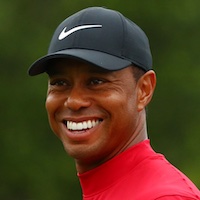
Eldrick Tont “Tiger” Woods (born December 30, 1975) is an American professional golfer. He is tied for first in PGA Tour wins, ranks second in men’s major championships, and holds numerous golf records. Woods is widely regarded as one of the greatest golfers of all time and one of the most famous athletes in history. He is an inductee of the World Golf Hall of Fame.
Following an outstanding junior, college, and amateur golf career, Woods turned professional in 1996 at the age of 20. By the end of April 1997, he won three PGA Tour events in addition to his first major, the 1997 Masters, which he won by 12 strokes in a record-breaking performance. He reached number one in the world rankings for the first time in June 1997, less than a year after turning pro. Throughout the first decade of the 21st century, Woods was the dominant force in golf. He was the top-ranked golfer in the world from August 1999 to September 2004 (264 consecutive weeks) and again from June 2005 to October 2010 (281 consecutive weeks). During this time, he won 13 of golf’s major championships.
The next decade of Woods’ career was marked by comebacks from personal problems and injuries. He took a self-imposed hiatus from professional golf from December 2009 to early April 2010 in an attempt to resolve marital issues with his wife Elin at the time. Woods admitted to multiple infidelities, and the couple eventually divorced. He fell to number 58 in the world rankings in November 2011 before ascending again to the number-one ranking between March 2013 and May 2014. However, injuries led him to undergo four back surgeries between 2014 and 2017. Woods competed in only one tournament between August 2015 and January 2018, and he dropped off the list of the world’s top 1,000 golfers. On his return to regular competition, Woods made steady progress to the top of the game, winning his first tournament in five years at the Tour Championship in September 2018 and his first major in 11 years at the 2019 Masters.
Woods has held numerous golf records. He has been the number one player in the world for the most consecutive weeks and for the greatest total number of weeks of any golfer in history. He has been awarded PGA Player of the Year a record 11 times and has won the Byron Nelson Award for lowest adjusted scoring average a record eight times. Woods has the record of leading the money list in ten different seasons. He has won 15 professional major golf championships (trailing only Jack Nicklaus, who leads with 18) and 82 PGA Tour events (tied for first all time with Sam Snead). Woods leads all active golfers in career major wins and career PGA Tour wins. Woods is the fifth (after Gene Sarazen, Ben Hogan, Gary Player and Jack Nicklaus) player to achieve the career Grand Slam, and the youngest to do so. He is also the second golfer (after Nicklaus) to achieve a career Grand Slam three times.
Woods has won 18 World Golf Championships. He was also part of the American winning team for the 1999 Ryder Cup. In May 2019, Woods was awarded the Presidential Medal of Freedom by Donald Trump, the fourth golfer to receive the honor.
On February 23, 2021, Woods was hospitalized in serious but stable condition after a single-car collision and underwent emergency surgery to repair compound fractures sustained in each leg in addition to a shattered ankle.[16] In an interview with Golf Digest in November 2021, Woods indicated that his full-time career as a professional golfer was over, although he would continue to play “a few events per year”.
Career Achivements
PGA Tour wins (82)
European Tour wins (41)
Japan Golf Tour wins (3)
Asian Tour wins (2)
PGA Tour of Australasia wins (3)
Other wins (16)
Amateur wins (21)
Herbert Hoover
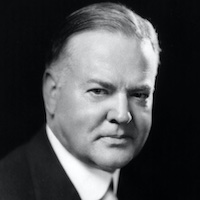
Herbert Clark Hoover (August 10, 1874 – October 20, 1964) was an American politician and engineer who served as the 31st president of the United States from 1929 to 1933 and a member of the Republican Party, holding office during the onset of the Great Depression. Before serving as president, Hoover led the Commission for Relief in Belgium, served as the director of the U.S. Food Administration, and served as the third U.S. secretary of commerce.
Hoover was born to a Quaker family in West Branch, Iowa, but he grew up in Oregon. He took a position with a London-based mining company after graduating from Stanford University in 1895. After the outbreak of World War I, he became the head of the Commission for Relief in Belgium, an international relief organization that provided food to occupied Belgium. When the U.S. entered the war, President Woodrow Wilson appointed Hoover to lead the Food Administration, and Hoover became known as the country’s “food czar”. After the war, Hoover led the American Relief Administration, which provided food to the inhabitants of Central and Eastern Europe. Hoover’s wartime service made him a favorite of many progressives, and he unsuccessfully sought the Republican nomination in the 1920 presidential election.
President Warren G. Harding appointed Hoover as Secretary of Commerce in 1920, and he continued to serve under President Calvin Coolidge after Harding died in 1923. Hoover was an unusually active and visible Cabinet member, becoming known as “Secretary of Commerce and Under-Secretary of all other departments”. He was influential in the development of air travel and radio. He led the federal response to the Great Mississippi Flood of 1927. Hoover won the Republican nomination in the 1928 presidential election, and decisively defeated Democratic candidate Al Smith. The stock market crashed shortly after Hoover took office, and the Great Depression became the central issue of his presidency. Hoover pursued a variety of policies in an attempt to lift the economy, but opposed directly involving the federal government in relief efforts.
In the midst of the economic crisis, Hoover was decisively defeated by Democratic nominee Franklin D. Roosevelt in the 1932 presidential election. Hoover’s retirement was over 31 years long, one of the longest presidential retirements. He authored numerous works and became increasingly conservative in retirement. He strongly criticized Roosevelt’s foreign policy and New Deal domestic agenda. In the 1940s and 1950s, public opinion of Hoover improved because he served in various assignments for presidents Harry S. Truman and Dwight D. Eisenhower, including chairing the Hoover Commission. Nonetheless, Hoover is often regarded as a below-average U.S. president, and most polls of historians and political scientists rank him in the bottom third overall.
Anthony Kennedy
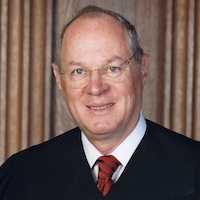
Anthony McLeod Kennedy (born July 23, 1936) is an American retired lawyer and jurist who served as an associate justice of the Supreme Court of the United States from 1988 until his retirement in 2018. He was nominated to the court in 1987 by President Ronald Reagan, and sworn in on February 18, 1988. After the retirement of Sandra Day O’Connor in 2006, he was the swing vote on many of the Roberts Court’s 5–4 decisions.
Born in Sacramento, California, Kennedy took over his father’s legal practice in Sacramento after graduating from Harvard Law School. In 1975, President Gerald Ford appointed Kennedy to the United States Court of Appeals for the Ninth Circuit. In November 1987, after two failed attempts at nominating a successor to Associate Justice Lewis F. Powell Jr., President Reagan nominated Kennedy to the Supreme Court. Kennedy won unanimous confirmation from the United States Senate in February 1988. Following the death of Antonin Scalia in February 2016, Kennedy became the senior associate justice of the court; he remained the senior associate justice until his July 2018 retirement. Kennedy retired during the presidency of Donald Trump and was succeeded by his former law clerk, Brett Kavanaugh.
Kennedy authored the majority opinion in several important cases, including Boumediene v. Bush, Citizens United v. FEC, and four major gay rights cases, Romer v. Evans, Lawrence v. Texas, United States v. Windsor, and Obergefell v. Hodges. He also co-authored the plurality opinion in Planned Parenthood v. Casey.
Education and Career
Following in his mother’s footsteps, Kennedy enrolled at Stanford University where he developed an interest in constitutional law. After spending his senior year at the London School of Economics, Kennedy graduated Phi Beta Kappa from Stanford in 1958 with a Bachelor of Arts degree in political science. Kennedy then attended Harvard Law School, where he graduated cum laude with a Bachelor of Laws in 1961.
Kennedy was in private practice in San Francisco from 1961 to 1963. In 1963, following his father’s death, he took over his father’s Sacramento practice, which he operated until 1975. From 1965 to 1988, he was a professor of constitutional law at McGeorge School of Law, at the University of the Pacific. Kennedy served in the California Army National Guard from 1961 to 1962 and became a private first class. He was on the board of the Federal Judicial Center from 1987 to 1988. He also served on two committees of the Judicial Conference of the United States: the Advisory Panel on Financial Disclosure Reports and Judicial Activities (subsequently renamed the Advisory Committee on Codes of Conduct) from 1979 to 1987, and the Committee on Pacific Territories from 1979 to 1990, which he chaired from 1982 to 1990.
On March 3, 1975, upon Reagan’s recommendation, President Gerald Ford nominated Kennedy to the seat on the United States Court of Appeals for the Ninth Circuit that had been vacated by Charles Merton Merrill. Kennedy was unanimously confirmed by the U.S. Senate on March 20 and received his commission on March 24, 1975.
On November 11, 1987, President Reagan nominated Kennedy to the Supreme Court seat vacated by Lewis F. Powell Jr., who had announced his retirement in late June. In July, Reagan nominated Robert Bork, who was rejected 42—58 by the Senate on October 23. The President’s next nominee, Douglas Ginsburg, withdrew his name from consideration on November 7 after admitting to marijuana use, and Senate Judiciary Committee member Patrick Leahy said that if Reagan’s next nominee was unacceptable to Senate Democrats, they would refuse hearings for any candidate until after the 1988 presidential election. Kennedy was then subjected to an unprecedentedly thorough investigation of his background, which did not uncover any information that would hinder his nomination. His hearings before the Senate judiciary committee began on December 14, and lasted just three consecutive days. When the Senate voted on Kennedy’s nomination, he received bipartisan support. Maureen Hoch of PBS wrote that he “virtually sailed through the confirmation process and was widely viewed by conservatives and liberals alike as balanced and fair”. The U.S. Senate confirmed him on February 3, 1988, by a vote of 97 to 0. Absent from the vote were three Democrats: Paul Simon and Al Gore were campaigning and Joe Biden was ill. Attorney General Edwin Meese presented Kennedy’s commission to the court in a swearing-in ceremony on February 18, 1988.
Dianne Feinstein
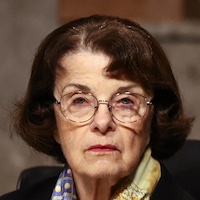
Dianne Goldman Berman Feinstein (born Dianne Emiel Goldman; June 22, 1933) is an American politician who serves as the senior United States senator from California, a seat she has held since 1992. A member of the Democratic Party, she was mayor of San Francisco from 1978 to 1988.
Born in San Francisco, Feinstein graduated from Stanford University in 1955. In the 1960s, she worked in local government in San Francisco. Feinstein was elected to the San Francisco Board of Supervisors in 1969. She served as the board’s first female president in 1978, during which time the assassinations of Mayor George Moscone and City Supervisor Harvey Milk by Dan White drew national attention. Feinstein succeeded Moscone as mayor and became the first woman to serve in that position. During her tenure, she led the renovation of the city’s cable car system and oversaw the 1984 Democratic National Convention. Despite a failed recall attempt in 1983, Feinstein was a very popular mayor and was named the most effective mayor in the country by City & State in 1987.
After losing a race for governor in 1990, Feinstein won a 1992 special election to the U.S. Senate. The special election was triggered by the resignation of Pete Wilson, who defeated her in the 1990 gubernatorial election. Despite being elected on the same ballot as her peer Barbara Boxer, Feinstein became California’s first female U.S. senator, as she was elected in a special election and sworn in before Boxer. She became California’s senior senator a few weeks later in 1993 when Alan Cranston retired. Feinstein has been reelected five times and in the 2012 election received 7.86 million votes – the most popular votes in any U.S. Senate election in history.
Feinstein authored the 1994 Federal Assault Weapons Ban, which expired in 2004. She introduced a new assault weapons bill in 2013 that failed to pass. Feinstein is the first woman to have chaired the Senate Rules Committee and the Senate Intelligence Committee, and the first woman to have presided over a U.S. presidential inauguration. She was the ranking member of the Senate Judiciary Committee from 2017 to 2021 and has chaired the International Narcotics Control Caucus since 2021, previously chairing the latter from 2009 to 2015.
At 88, Feinstein is the oldest sitting U.S. senator. In March 2021, Feinstein became the longest-serving U.S. senator from California, surpassing Hiram Johnson. Upon Barbara Mikulski’s retirement in January 2017, Feinstein became the longest-tenured female senator currently serving; should she serve through November 5, 2022, Feinstein will surpass Mikulski’s record as the longest-tenured female senator. In January 2021, Feinstein filed the initial Federal Election Commission paperwork needed to seek reelection in 2024, when she will be 91. Feinstein’s staff later clarified that this was due to election law technicalities, and did not indicate her intentions in 2024.
Awards and Honors
Feinstein was awarded the honorary degree of Doctor of Laws from Golden Gate University in San Francisco on June 4, 1977. She was awarded the Legion of Honour by France in 1984. Feinstein received with the Woodrow Wilson Award for public service from the Woodrow Wilson Center of the Smithsonian Institution on November 3, 2001, in Los Angeles. In 2002, Feinstein won the American Medical Association’s Nathan Davis Award for “the Betterment of the Public Health”. She was named as one of The Forward 50 in 2015.
Sundar Pichai
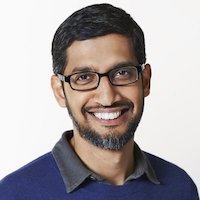
Pichai Sundararajan (born June 10, 1972), better known as Sundar Pichai, is an Indian-American business executive. He is the chief executive officer (CEO) of Alphabet Inc. and its subsidiary Google.
Born in Madras, India, Pichai earned his degree from IIT Kharagpur in metallurgical engineering. Moving to the United States, he attained an M.S. from Stanford University in materials science and engineering and further attained an MBA from the Wharton School of the University of Pennsylvania, where he was named a Siebel Scholar and a Palmer Scholar, respectively.
Pichai began his career as a materials engineer. Following a short stint at the management consulting firm McKinsey & Co., Pichai joined Google in 2004, where he led the product management and innovation efforts for a suite of Google’s client software products, including Google Chrome and Chrome OS, as well as being largely responsible for Google Drive. In addition, he went on to oversee the development of other applications such as Gmail and Google Maps. In 2010, Pichai also announced the open-sourcing of the new video codec VP8 by Google and introduced the new video format, WebM. The Chromebook was released in 2012. In 2013, Pichai added Android to the list of Google products that he oversaw.
Pichai was selected to become the next CEO of Google on August 10, 2015, after previously being appointed Product Chief by CEO Larry Page. On October 24, 2015, he stepped into the new position at the completion of the formation of Alphabet Inc., the new holding company for the Google company family. He was appointed to the Alphabet Board of Directors in 2017.
Pichai was included in Time’s annual list of the 100 most influential people in 2016 and 2020.
Career
Pichai worked in engineering and product management at Applied Materials and in management consulting at McKinsey & Company. Pichai joined Google in 2004, where he led the product management and innovation efforts for a suite of Google’s client software products, including Google Chrome and Chrome OS, as well as being largely responsible for Google Drive. He went on to oversee the development of other applications such as Gmail and Google Maps. On November 19, 2009, Pichai gave a demonstration of Chrome OS; the Chromebook was released for trial and testing in 2011, and released to the public in 2012. On May 20, 2010, he announced the open-sourcing of the new video codec VP8 by Google and introduced the new video format, WebM.
On March 13, 2013, Pichai added Android to the list of Google products that he oversaw. Android was formerly managed by Andy Rubin. He was a director of Jive Software from April 2011 to July 30, 2013. Pichai was selected to become the next CEO of Google on August 10, 2015 after previously being appointed Product Chief by CEO, Larry Page. On October 24, 2015 he stepped into the new position at the completion of the formation of Alphabet Inc., the new holding company for the Google company family.
Pichai had been suggested as a contender for Microsoft’s CEO in 2014, a position that was eventually given to Satya Nadella.
In August 2017, Pichai drew publicity for firing a Google employee who wrote a ten-page manifesto criticizing the company’s diversity policies and arguing that “distribution of preferences and abilities of men and women differ in part due to biological causes and … these differences may explain why we don’t see equal representation of women in tech and leadership”. While noting that the manifesto raised a number of issues that are open to debate, Pichai said in a memo to Google employees that “to suggest a group of our colleagues have traits that make them less biologically suited to that work is offensive and not OK”.
In December 2017, Pichai was a speaker at the World Internet Conference in China, where he stated that “a lot of work Google does is to help Chinese companies. There are many small and medium-sized businesses in China who take advantage of Google to get their products to many other countries outside of China.”
In December 2019, Pichai became the CEO of Alphabet Inc.
Marissa Mayer
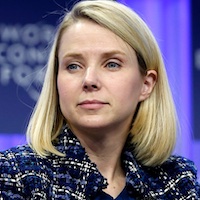
Marissa Ann Mayer (born May 30, 1975) is an American businesswoman and investor. She is an information technology executive, and co-founder of Sunshine Contact. Mayer formerly served as the president and chief executive officer of Yahoo!, a position she held beginning in July 2012. It was announced in January 2017 that she would step down from the company’s board upon the sale of Yahoo!’s operating business to Verizon Communications for $4.8 billion. She did not join the newly combined company, now called Verizon Media (formerly Oath), and she announced her resignation on June 13, 2017. She is a graduate of Stanford University and was a long-time executive, usability leader, and key spokeswoman for Google (employee #20).
Education
Intending to become a pediatric neurosurgeon, Mayer took pre-med classes at Stanford University. She later switched her major from pediatric neuroscience to symbolic systems, a major which combined philosophy, cognitive psychology, linguistics, and computer science. At Stanford, she danced in the university ballet’s Nutcracker, was a member of parliamentary debate, volunteered at children’s hospitals, and helped bring computer science education to Bermuda’s schools.
During her junior year, she taught a class in symbolic systems, with Eric S. Roberts as her supervisor. The class was so well received by students that Roberts asked Mayer to teach another class over the summer. Mayer went on to graduate with honors from Stanford with a BS in symbolic systems in 1997 and an MS in computer science in 1999. For both degrees, her specialization was in artificial intelligence. For her undergraduate thesis, she built travel-recommendation software that advised users in natural-sounding human language.
In 2009, the Illinois Institute of Technology granted Mayer an honoris causa doctorate degree in recognition of her work in the field of search. Mayer interned at SRI International in Menlo Park, California, and Ubilab, UBS’s research lab based in Zurich, Switzerland. She holds several patents in artificial intelligence and interface design
Career
After graduating from Stanford, Mayer received 14 job offers, including a teaching job at Carnegie Mellon University and a consulting job at McKinsey & Company. She joined Google in 1999 as employee number 20. She started out writing code and overseeing small teams of engineers, developing and designing Google’s search offerings. She became known for her attention to detail, which helped land her a promotion to product manager, and later she became director of consumer web products. She oversaw the layout of Google’s well-known, unadorned search homepage. She was also on the three-person team responsible for Google AdWords, which is an advertising platform that allows businesses to show their product to relevant potential customers based on their search terms. AdWords helped deliver 96% of the company’s revenue in the first quarter of 2011.
In 2002, Mayer started the Associate Product Manager (APM) program, a Google mentorship initiative to recruit new talents and cultivate them for leadership roles. Each year, Mayer selected a number of junior employees for the two-year program, where they took on extracurricular assignments and intensive evening classes. Notable graduates of the program include Bret Taylor and Justin Rosenstein. In 2005, Mayer became Vice President of Search Products and User Experience. Mayer held key roles in Google Search, Google Images, Google News, Google Maps, Google Books, Google Product Search, Google Toolbar, iGoogle, and Gmail.
Mayer was the vice president of Google Search Products and User Experience until the end of 2010, when she was asked by then-CEO Eric Schmidt to head the Local, Maps, and Location Services. In 2011, she secured Google’s acquisition of survey site Zagat for $125 million. While Mayer was working at Google, she taught introductory computer programming at Stanford and mentored students at the East Palo Alto Charter School. She was awarded the Centennial Teaching Award and the Forsythe Award from Stanford.
On July 16, 2012, Mayer was appointed president and CEO of Yahoo!, effective the following day. To simplify the bureaucratic process and “make the culture the best version of itself”, Mayer launched a new online program called PB&J. It collects employee complaints, as well as their votes on problems in the office; if a problem generates at least 50 votes, online management automatically investigates the matter. Having worked from home toward the end of her pregnancy, Mayer returned to work after giving birth to a boy, and built a mother’s room next to her office suite—Mayer was consequently criticized for the telecommuting ban. In April 2013, Mayer changed Yahoo!’s maternity leave policy, lengthening its time allowance and providing a cash bonus to parents. CNN noted this was in line with other Silicon Valley companies, such as Facebook and Google.
On May 20, 2013, Mayer led Yahoo! to acquire Tumblr in a $1.1 billion acquisition. In February 2016, Yahoo! acknowledged that the value of Tumblr had fallen by $230 million since it was acquired. In July 2013, Yahoo! reported a fall in revenues, but a rise in profits compared with the same period in the previous year. Reaction on Wall Street was muted, with shares falling 1.7%. In September 2013, it was reported that the stock price of Yahoo! had doubled over the 14 months since Mayer’s appointment. However, much of this growth may be attributed to Yahoo!’s stake in the Chinese e-commerce company Alibaba Group, which was acquired before Mayer’s tenure.
In November 2013, Mayer instituted a performance review system based on a bell curve ranking of employees, suggesting that managers rank their employees on a bell curve, with those at the low end being fired. Employees complained that some managers were viewing the process as mandatory.
In 2014, Mayer was ranked sixth on Fortune’s 40 under 40 list, and was ranked the 16th most-powerful businesswoman in the world that year according to the same publication. In March 2016 Fortune named Mayer as one of the world’s most disappointing leaders. Yahoo! stocks continued to fall by more than 30% throughout 2015, while 12 key executives left the company.
In December 2015, the New York-based hedge fund SpringOwl, a shareholder in Yahoo Inc., released a statement arguing that Mayer be replaced as CEO. Starboard Value, an activist investing firm that owns a stake in Yahoo, likewise wrote a scathing letter regarding Mayer’s performance at Yahoo. By January 2016, it was further estimated that Yahoo!’s core business has been worth less than zero dollars for the past few quarters. In February 2016, Mayer confirmed that Yahoo! was considering the possibility of selling its core business. In March 2017, it was reported that Mayer could receive a $23 million termination package upon the sale of Yahoo! to Verizon. Mayer announced her resignation on June 13, 2017. In spite of large losses in advertising revenue at Yahoo! and a 50% reduction in staff during her 5 years as CEO, Mayer was paid a total of $239 million over that time, mainly in stock and stock options.
After leaving Yahoo! in 2017, Mayer started Sunshine (formerly Lumi Labs) with former colleague Enrique Munoz Torres. The company is based in Palo Alto and is focused on artificial intelligence and consumer media. On November 18, 2020, Mayer announced that Lumi Labs would be rebranded as Sunshine at the same time as revealing its first product: Sunshine Contacts. Sunshine Contacts claims to improve the users iPhone contacts and Google contacts using intelligent algorithms, contact data, public sources, and more.
William Hewlett
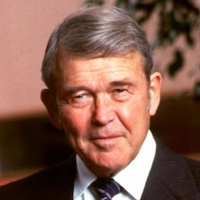
William Redington Hewlett (May 20, 1913 – January 12, 2001) was an American engineer and the co-founder, with David Packard, of the Hewlett-Packard Company (HP).
Hewlett was born in Ann Arbor, Michigan, where his father taught at the University of Michigan Medical School. In 1916 the family moved to San Francisco after his father, Albion Walter Hewlett, took a similar position at Stanford Medical School, located at the time in San Francisco. He attended Lowell High School and was the 1929-1930 Battalion Commander of the school’s Army JROTC program. He was accepted at Stanford University as a favor to his late father who had died of a brain tumor in 1925.
Hewlett received his bachelor’s degree from Stanford University in 1934, a Master of Science degree in electrical engineering from MIT in 1936, and the degree of Electrical Engineer from Stanford in 1939. He joined the Kappa Sigma fraternity during his time at Stanford.
Career
Hewlett attended undergraduate classes taught by Fred Terman at Stanford and became acquainted with David Packard. Packard and he began discussing forming a company in August 1937, and founded Hewlett-Packard Company as a partnership on January 1, 1939. A flip of a coin decided the ordering of their names. Their first big breakthrough came when Disney purchased multiple audio oscillators designed by Hewlett for use in the production of the film Fantasia.
The company incorporated in 1947 and tendered an initial public offering in 1957. Bill Hewlett and Dave Packard were proud of their company culture which came to be known as the HP Way. The HP Way is a corporate culture that claimed to be centered not only on making money but also on respecting and nurturing its employees.
Hewlett was president of the Institute of Radio Engineers in 1954. He was president of HP from 1964 to 1977, and served as CEO from 1968 to 1978, when he was succeeded by John A. Young. He remained chairman of the executive committee until 1983, and then served as vice chairman of the board until 1987.
A young Steve Jobs, then age 12, called Hewlett (whose number was in the phone book) and requested any available parts for a frequency counter he was building. Hewlett, impressed with Jobs’ initiative, offered him a summer job assembling frequency counters. Jobs then considered HP one of the companies that he admired, regarding it among the handful of companies (Disney and Intel were the others) that were built “to last, not just to make money”. Steve Wozniak, co-founder of Apple along with Jobs, unsuccessfully attempted five times to sell the Apple I computer to HP while working there. The early Apple computers were built with HP parts, under a legal release from HP. Of the missed opportunity, Hewlett reportedly said, “You win some, you lose some.”
Awards
IEEE Founders Medal (1973)
Vermilye Medal (1975)
Golden Plate Award of the American Academy of Achievement (1981)
National Medal of Science (1983)
National Inventors Hall of Fame (1992)
Lemelson-MIT Prize Lifetime Achievement Award (1995)
The 3rd Annual Heinz Award Chairman’s Medal (with David Packard) (1997)
Entrepreneur Walk of Fame (2011)
Jensen Huang
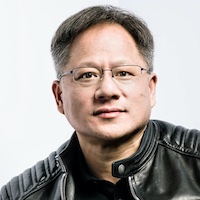
Jen-Hsun “Jensen” Huang (born February 17, 1963) is a Taiwanese-American billionaire business magnate, electrical engineer, and co-founder of Nvidia Corporation, where he currently serves as president and CEO. Huang was born in Tainan, Taiwan. His family emigrated to the United States when he was 9 years old, first living in Oneida, Kentucky, and settling in Oregon. He graduated from Aloha High School, outside Portland. Huang received his undergraduate degree in electrical engineering from Oregon State University in 1984, and his master’s degree in electrical engineering from Stanford University in 1992.
After college he was a director at LSI Logic and a microprocessor designer at Advanced Micro Devices, Inc. (AMD). On his 30th birthday in 1993, Huang co-founded Nvidia and is the CEO and president. He owns 3.6% of Nvidia’s stock, which went public in 1999. He earned $24.6 million as CEO in 2007, ranking him as the 61st highest paid U.S. CEO by Forbes. During the economic downturn, 2008 through 2010, Jensen voluntarily reduced his salary to $1. As of April 2021, Huang’s net worth is US$14.3 billion according to the Bloomberg Billionaires Index.
Awards
1999: Jensen Huang was named Entrepreneur of the Year in High Technology by Ernst & Young.
1999: EY Entrepreneur of the Year Award for the Northern California region.
2002: recipient of the Daniel J. Epstein Engineering Management Award from the University of Southern California.
2003: Huang received the Dr. Morris Chang Exemplary Leadership Award, which recognizes a leader who has made exceptional contributions to driving the development, innovation, growth, and long-term opportunities of the fabless semiconductor industry, from the Fabless Semiconductor Association.
2003: He was a National Finalist for the EY Entrepreneur of the Year Award.
2004: Morris Chang Exemplary Leadership Award.
2009: Huang was awarded an honorary doctorate from Oregon State University.
20017: He was named Fortune’s Businessperson of the Year.
2018: Huang was listed in the inaugural Edge 50, naming the world’s top 50 influencers in edge computing.
2020: Jensen Huang was named “Supplier CEO of the year” by Eurostars AutomotiveNewsEurope.
2020: Huang was awarded an honorary doctorate from National Taiwan University at the school anniversary.
2021: the Semiconductor Industry Association (SIA) announced that Jensen Huang is the 2021 recipient of the industry’s highest honor, the Robert N. Noyce Award.
2021: he was included in the Time 100, Time’s annual list of the 100 most influential people in the world.
Charles Schwab
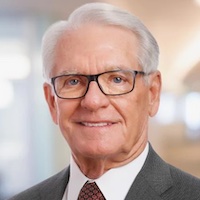
Charles Robert Schwab (born July 29, 1937) is an American investor and financial executive. He is the founder and chairman of the Charles Schwab Corporation. He pioneered discount sales of equity securities starting in 1975. His company became by far the largest discount securities dealer in the United States. He retired as CEO in 2008, but remains chairman and is the largest shareholder. As of May 2021, his net worth is estimated by Forbes to be $10.6 billion, making him 210th richest person in the world.
Schwab was born in Sacramento, California, the son of Terrie and Lloyd Schwab. He attended Santa Barbara High School in Santa Barbara, California, and was captain of the golf team. He attended pre-college school at Holy Rosary Academy in Woodland, California. Schwab graduated from Stanford University in 1959 with a Bachelor of Arts in Economics. In 1961, he graduated from Stanford Graduate School of Business with a Master of Business Administration. Schwab is a knight of the Sigma Nu fraternity.
Career
In 1963, Charles R. Schwab and three other partners launched Investment Indicator, an investment newsletter. At its height, the newsletter had 3,000 subscribers, each paying $84 a year to subscribe. In April 1971, the firm incorporated in California as First Commander Corporation, a wholly owned subsidiary of Commander Industries, Inc., to offer traditional brokerage services and publish the Schwab investment newsletter. In November of that year, Schwab and four others purchased all the stock from Commander Industries, Inc. In 1972, Schwab bought all the stock from what was once Commander Industries.
In 1973, First Commander changed its name to Charles Schwab & Co., Inc. A decisive turning point came in 1975, when the U.S. Securities and Exchange Commission deregulated the securities industry through the Securities Acts Amendments of 1975, allowing companies like Schwab to charge any fees they wanted. Schwab had long complained that the established firms showed little concern for the needs of their customers. In those times securities were not bought by consumers, they were sold by salesmen, who made higher commissions and profits by selling riskier securities regardless of possible disadvantages to the consumers. Schwab set up a series of radically different policies. First, charges to consumers were cut in half. Second, salesmen were (and still are today) paid hourly salaries, rather than commissions on the total sale price. Third, Schwab refused to offer any advice to customers. It also set up a toll-free number to take orders nationwide and later set up 24/7 telephone system that would allow customers to place orders from anywhere, at any time. Established firms were outraged by these innovations, and tried to block Schwab’s expansion.
In September 1975, Schwab opened its first branch in Sacramento, California. It expanded across the state and cut its expenses by very heavy emphasis on automation. In 1981, Bank of America offered Schwab $53 million in stock for his 37 percent ownership. He sold, but remained as president of a semi-autonomous unit. At this point the unit had annual sales of $41 million, 600 employees, and 220,000 customers through 40 branches. Expansion was rapid, reaching 1.6 million customers in 1986, with sales of $308 million. Bank of America, however, had its own separate severe problems, and its stock plunged. The SEC investigated Charles Schwab on the possibility he was selling stock to take advantage of insider information; he denied it, and no charges were filed. Tensions between the Schwab unit and Bank of America escalated until 1987, when the deal was cut for Schwab to buy back the brokerage company for $230 million. Schwab took the firm public. In 1988, however, the company was forced to rebate $2 million to customers whose funds had been illegally used.
In 1977, Schwab began offering seminars to clients. By 1978, the company had 45,000 client accounts total, and the number grew to 84,000 in 1979. In 1980 Schwab established the industry’s first 24-hour quotation service, and the total of client accounts grew to 147,000. In 1981 Schwab became a member of the NYSE, and the total of client accounts grew to 222,000. In 1982, Schwab became the first firm to offer 24/7 order entry and quote service. It opened its first international office in Hong Kong, and the number of client accounts totaled 374,000. By 1995 the company was by far the largest discount broker, with revenue of $1.4 billion and $200 billion in total assets managed. By 1996 there were 3.6 million active accounts.
David S. Pottruck, who had spent the majority of his 20 years at the brokerage as Schwab’s right-hand man, shared the CEO title with Schwab from 1998 to 2003. In May 2003, Schwab stepped down, and gave Pottruck sole control as CEO. Just a year later, on July 24, 2004, the company’s board fired Pottruck, replacing him with Schwab. News of Pottruck’s removal came as the firm had announced that overall profit had dropped 10 percent, to $113 million, for the second quarter, driven largely by a 26 percent decline in revenue from customer stock trading. After coming back into control, Schwab conceded that the company had “lost touch with our heritage”, and quickly refocused the business on providing financial advice to individual investors. He also rolled back Pottruck’s fee hikes. The company rebounded, and earnings began to turn around in 2005, as did the stock.
Schwab always stressed cutting-edge technology, and pioneered computerization to replace paperwork. The emergence of the World Wide Web in the mid-1990s posed a new threat with new startups trying to exploit their software. Schwab responded in 1996 by becoming the first major financial services firm to sell online listed and over-the-counter stocks, as well as mutual funds and bonds. The startups charged $36 a trade, and Schwab charged $39 per Internet trade, compared to $160 charged by traditional brokerages using the old technology. In 1984, the firm innovated with the Mutual Funds Marketplace, which gave customers a choice of 140 no-load funds. It expanded to 500 no-load funds by 1992. In 2000 Schwab introduced mobile/wireless trading with its PocketBroker mobile app that functioned on RIM (BlackBerry), Palm, Windows CE, and WAP-enabled phones, with deployments in the US, UK, and Hong Kong. Schwab also introduced Schwab Bank (Charles Schwab Bank, National Association), a federally chartered intrastate retail bank headquartered in Reno, Nevada. The application for the bank was approved in February 2003 by the Office of the Comptroller of the Currency.
Awards
1989: Golden Plate Award of the American Academy of Achievement.
1997: “King of Online Brokers” by Forbes Magazine.
2016: Financial Innovation Award, The Museum of American Finance.
Kevin Systrom
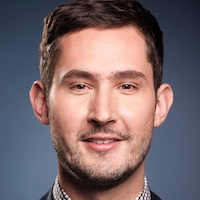
Kevin Systrom (born December 30, 1983) is an American computer programmer and entrepreneur. He co‑founded Instagram, the world’s largest photo sharing website, along with Mike Krieger. Systrom was included on the list of America’s Richest Entrepreneurs Under 40 2016. Under Systrom as CEO, Instagram became a fast growing app, with 800 million monthly users as of September 2017. He resigned as the CEO of Instagram on September 24, 2018. Facebook bought Instagram for $1 billion in 2012, a shocking sum at that time for a company with 13 employees, Instagram today has over one billion users and contributes over $20 billion to Facebook’s annual revenue.
Early life and education Systrom was born in 1983 in Holliston, Massachusetts. He is the son of Diane, a marketing executive at Zipcar, who also worked at Monster and Swapit during the first dotcom bubble, and Douglas Systrom, Vice President in Human Resources at TJX Companies.
Systrom attended Middlesex School in Concord, Massachusetts, where he was introduced to computer programming. He worked at Boston Beat, a vinyl record music store in Boston, while he was in high school. Systrom attended Stanford University and graduated in 2006 with a bachelor’s degree in management science and engineering. At Stanford, he was a member of the Sigma Nu fraternity. He turned down a recruitment offer from Mark Zuckerberg and instead spent the winter term of his third year in Florence, where he studied photography. He got his first taste of the startup world when he was chosen as one of twelve students to participate in the Mayfield Fellows Program at Stanford University. The fellowship led to his internship at Odeo, the company that eventually gave rise to Twitter.
Career
After graduating Stanford, he joined Google working on Gmail, Google Calendar, Docs, Spreadsheets and other products. He spent two years at Google as a product marketer; Systrom left Google out of frustration of not being moved into the Associate Product Manager program.
He made the prototype of what later became Burbn and pitched it to Baseline Ventures and Andreessen Horowitz at a party. He came up with the idea while on a vacation in Mexico when his girlfriend was unwilling to post her photos because they did not look good enough when taken by the iPhone 4 camera. The solution to the problem was to use filters, effectively hiding the qualitative inferiority of the photographs. Subsequently, Systrom developed the X-Pro II filter that is still in use on Instagram today.
After the first meeting, he decided to quit his job in order to explore whether or not Burbn could become a company. Within 2 weeks of quitting his job, he received US$500,000 seed funding round from both Baseline Ventures and Andreessen Horowitz. While in San Francisco, Systrom and Mike Krieger built Burbn, an HTML 5 check-in service, into a product that allowed users to do many things: check into locations, make plans (future check-ins), earn points for hanging out with friends, post pictures, and much more. However, recalling their studies in Mayfield Fellows Program, Krieger and Systrom identified that Burbn contained too many features and the users did not want a complicated product. They decided to focus on one specific feature, photo-sharing. The development of Burbn led to creation of Instagram. A month after launching, Instagram had grown to 1 million users. A year later, Instagram hit more than 10 million users.
In 2010, Systrom co‑founded the photo-sharing and, later, video-sharing social networking service Instagram with Mike Krieger in San Francisco, California. In April 2012, Instagram, along with 13 employees, was sold to Facebook for US$1 billion in cash and stock. According to multiple reports, the deal netted Systrom US$400 million based on his ownership stake in the business. One of the key contributions to the acquisition was that Mark Zuckerberg stated Facebook was “committed to building and growing Instagram independently”, allowing Systrom to continue to lead Instagram.
Under Systrom’s leadership, Instagram developed key features like the Explore tab, filters, and video. Over time, Instagram rolled out features allowing users to upload and filter photographs and short videos, follow other users’ feeds, geotag images, name location, and comment on other users’ photographs and short videos. Instagram allowed the development of web profiles in 2012, connecting accounts to Facebook, Twitter, Tumblr, and Flickr in 2013, an Explore tab in mid-2012, and Video in June 2013.
As of October 2015, 40 billion pictures had been shared on Instagram. As of June 2016, Instagram had over 500 million active users. Instagram as of early 2017 employed around 450 people. The app was used by 600 million people per month and 300 million per day. Its competitors Snapchat and Twitter employed more people for a smaller user base, with Twitter having 3,500 employees for 317 million monthly users, and Snapchat employing 1,500 people for half of Instagram’s daily user base.
According to Quartz and the New York Times, Systrom and Krieger implemented a system to overcome bottlenecks and slow decision-making in the company by scheduling meetings in which only decisions are taken. This approach was informed by Systrom’s interest in academic business theories, in particular Clayton M. Christensen’s concept of The Innovator’s Dilemma.
On September 24, 2018, it was announced that Systrom resigned from Instagram and would be leaving in few weeks.
John Steinbeck
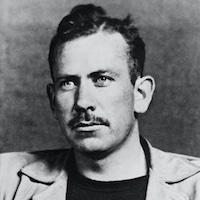
John Ernst Steinbeck Jr. (February 27, 1902 – December 20, 1968) was an American author and the 1962 Nobel Prize in Literature winner “for his realistic and imaginative writings, combining as they do sympathetic humor and keen social perception.” He has been called “a giant of American letters.”
During his writing career, he authored 33 books, with one book coauthored alongside Edward Ricketts, including 16 novels, six non-fiction books, and two collections of short stories. He is widely known for the comic novels Tortilla Flat (1935) and Cannery Row (1945), the multi-generation epic East of Eden (1952), and the novellas The Red Pony (1933) and Of Mice and Men (1937). The Pulitzer Prize-winning The Grapes of Wrath (1939) is considered Steinbeck’s masterpiece and part of the American literary canon. In the first 75 years after it was published, it sold 14 million copies.
Most of Steinbeck’s work is set in central California, particularly in the Salinas Valley and the California Coast Ranges region. His works frequently explored the themes of fate and injustice, especially as applied to downtrodden or everyman protagonists.
Early life
He spent his summers working on nearby ranches and later with migrant workers on Spreckels sugar beet farms. There he learned of the harsher aspects of the migrant life and the darker side of human nature, which supplied him with material expressed in Of Mice and Men. He explored his surroundings, walking across local forests, fields, and farms. While working at Spreckels Sugar Company, he sometimes worked in their laboratory, which gave him time to write. He had considerable mechanical aptitude and fondness for repairing things he owned.
Steinbeck graduated from Salinas High School in 1919 and went on to study English literature at Stanford University, leaving without a degree in 1925. He traveled to New York City where he took odd jobs while trying to write. When he failed to publish his work, he returned to California and worked in 1928 as a tour guide and caretaker at Lake Tahoe, where he met Carol Henning, his first wife. They married in January 1930 in Los Angeles, where, with friends, he attempted to make money by manufacturing plaster mannequins.
When their money ran out six months later due to a slow market, Steinbeck and Carol moved back to Pacific Grove, California, to a cottage owned by his father, on the Monterey Peninsula a few blocks outside the Monterey city limits. The elder Steinbecks gave John free housing, paper for his manuscripts, and from 1928, loans that allowed him to write without looking for work. During the Great Depression, Steinbeck bought a small boat, and later claimed that he was able to live on the fish and crabs that he gathered from the sea, and fresh vegetables from his garden and local farms. When those sources failed, Steinbeck and his wife accepted welfare, and on rare occasions, stole bacon from the local produce market. Whatever food they had, they shared with their friends. Carol became the model for Mary Talbot in Steinbeck’s novel Cannery Row.
Writing
Steinbeck’s first novel, Cup of Gold, published in 1929, is loosely based on the life and death of privateer Henry Morgan. It centers on Morgan’s assault and sacking of Panamá Viejo, sometimes referred to as the “Cup of Gold”, and on the women, brighter than the sun, who were said to be found there.
Between 1930 and 1933, Steinbeck produced three shorter works. The Pastures of Heaven, published in 1932, consists of twelve interconnected stories about a valley near Monterey, which was discovered by a Spanish corporal while chasing runaway Indian slaves. In 1933 Steinbeck published The Red Pony, a 100-page, four-chapter story weaving in memories of Steinbeck’s childhood. To a God Unknown, named after a Vedic hymn, follows the life of a homesteader and his family in California, depicting a character with a primal and pagan worship of the land he works. Although he had not achieved the status of a well-known writer, he never doubted that he would achieve greatness.
Steinbeck achieved his first critical success with Tortilla Flat (1935), a novel set in post-war Monterey, California, that won the California Commonwealth Club’s Gold Medal. It portrays the adventures of a group of classless and usually homeless young men in Monterey after World War I, just before U.S. prohibition. They are portrayed in ironic comparison to mythic knights on a quest and reject nearly all the standard mores of American society in enjoyment of a dissolute life devoted to wine, lust, camaraderie and petty theft. In presenting the 1962 Nobel Prize to Steinbeck, the Swedish Academy cited “spicy and comic tales about a gang of paisanos, asocial individuals who, in their wild revels, are almost caricatures of King Arthur’s Knights of the Round Table. It has been said that in the United States this book came as a welcome antidote to the gloom of the then prevailing depression.” Tortilla Flat was adapted as a 1942 film of the same name, starring Spencer Tracy, Hedy Lamarr and John Garfield, a friend of Steinbeck. With some of the proceeds, he built a summer ranch-home in Los Gatos.
Steinbeck began to write a series of “California novels” and Dust Bowl fiction, set among common people during the Great Depression. These included In Dubious Battle, Of Mice and Men and The Grapes of Wrath. He also wrote an article series called The Harvest Gypsies for the San Francisco News about the plight of the migrant worker.
Of Mice and Men was a drama about the dreams of two migrant agricultural laborers in California. It was critically acclaimed and Steinbeck’s 1962 Nobel Prize citation called it a “little masterpiece”. Its stage production was a hit, starring Wallace Ford as George and Broderick Crawford as George’s companion, the mentally childlike, but physically powerful itinerant farmhand Lennie. Steinbeck refused to travel from his home in California to attend any performance of the play during its New York run, telling director George S. Kaufman that the play as it existed in his own mind was “perfect” and that anything presented on stage would only be a disappointment. Steinbeck wrote two more stage plays (The Moon Is Down and Burning Bright).
Of Mice and Men was also adapted as a 1939 Hollywood film, with Lon Chaney, Jr. as Lennie (he had filled the role in the Los Angeles stage production) and Burgess Meredith as George. Meredith and Steinbeck became close friends for the next two decades. Another film based on the novella was made in 1992 starring Gary Sinise as George and John Malkovich as Lennie.
Steinbeck followed this wave of success with The Grapes of Wrath (1939), based on newspaper articles about migrant agricultural workers that he had written in San Francisco. It is commonly considered his greatest work. According to The New York Times, it was the best-selling book of 1939 and 430,000 copies had been printed by February 1940. In that month, it won the National Book Award, favorite fiction book of 1939, voted by members of the American Booksellers Association. Later that year, it won the Pulitzer Prize for Fiction and was adapted as a film directed by John Ford, starring Henry Fonda as Tom Joad; Fonda was nominated for the best actor Academy Award. Grapes was controversial. Steinbeck’s New Deal political views, negative portrayal of aspects of capitalism, and sympathy for the plight of workers, led to a backlash against the author, especially close to home. Claiming the book both was obscene and misrepresented conditions in the county, the Kern County Board of Supervisors banned the book from the county’s publicly funded schools and libraries in August 1939. This ban lasted until January 1941.
Steinbeck’s novel The Moon Is Down (1942), about the Socrates-inspired spirit of resistance in an occupied village in Northern Europe, was made into a film almost immediately. It was presumed that the unnamed country of the novel was Norway and the occupiers the Germans. In 1945, Steinbeck received the King Haakon VII Freedom Cross for his literary contributions to the Norwegian resistance movement.
In 1943, Steinbeck served as a World War II war correspondent for the New York Herald Tribune and worked with the Office of Strategic Services (predecessor of the CIA). It was at that time he became friends with Will Lang, Jr. of Time/Life magazine. During the war, Steinbeck accompanied the commando raids of Douglas Fairbanks, Jr.’s Beach Jumpers program, which launched small-unit diversion operations against German-held islands in the Mediterranean. At one point, he accompanied Fairbanks on an invasion of an island off the coast of Italy and used a Thompson submachine gun to help capture Italian and German prisoners. Some of his writings from this period were incorporated in the documentary Once There Was a War (1958).
Steinbeck returned from the war with a number of wounds from shrapnel and some psychological trauma. He treated himself, as ever, by writing. He wrote Alfred Hitchcock’s movie, Lifeboat (1944), and with screenwriter Jack Wagner, A Medal for Benny (1945), about paisanos from Tortilla Flat going to war. He later requested that his name be removed from the credits of Lifeboat, because he believed the final version of the film had racist undertones. In 1944, suffering from homesickness for his Pacific Grove/Monterey life of the 1930s, he wrote Cannery Row (1945), which became so famous that in 1958 Ocean View Avenue in Monterey, the setting of the book, was renamed Cannery Row.
After the war, he wrote The Pearl (1947), knowing it would be filmed eventually. The story first appeared in the December 1945 issue of Woman’s Home Companion magazine as “The Pearl of the World”. It was illustrated by John Alan Maxwell. The novel is an imaginative telling of a story which Steinbeck had heard in La Paz in 1940, as related in The Log From the Sea of Cortez, which he described in Chapter 11 as being “so much like a parable that it almost can’t be”. Steinbeck traveled to Cuernavaca, Mexico for the filming with Wagner who helped with the script; on this trip he would be inspired by the story of Emiliano Zapata, and subsequently wrote a film script (Viva Zapata!) directed by Elia Kazan and starring Marlon Brando and Anthony Quinn.
In 1947, Steinbeck made his first trip to the Soviet Union with photographer Robert Capa. They visited Moscow, Kyiv, Tbilisi, Batumi and Stalingrad, some of the first Americans to visit many parts of the USSR since the communist revolution. Steinbeck’s 1948 book about their experiences, A Russian Journal, was illustrated with Capa’s photos. In 1948, the year the book was published, Steinbeck was elected to the American Academy of Arts and Letters.
In 1952 Steinbeck’s longest novel, East of Eden, was published. According to his third wife, Elaine, he considered it his magnum opus, his greatest novel.
In 1952, John Steinbeck appeared as the on-screen narrator of 20th Century Fox’s film, O. Henry’s Full House. Although Steinbeck later admitted he was uncomfortable before the camera, he provided interesting introductions to several filmed adaptations of short stories by the legendary writer O. Henry. About the same time, Steinbeck recorded readings of several of his short stories for Columbia Records; the recordings provide a record of Steinbeck’s deep, resonant voice.
Following the success of Viva Zapata!, Steinbeck collaborated with Kazan on the 1955 film East of Eden, James Dean’s movie debut.
From March to October 1959, Steinbeck and his third wife Elaine rented a cottage in the hamlet of Discove, Redlynch, near Bruton in Somerset, England, while Steinbeck researched his retelling of the Arthurian legend of King Arthur and the Knights of the Round Table. Glastonbury Tor was visible from the cottage, and Steinbeck also visited the nearby hillfort of Cadbury Castle, the supposed site of King Arthur’s court of Camelot. The unfinished manuscript was published after his death in 1976, as The Acts of King Arthur and His Noble Knights. The Steinbecks recounted the time spent in Somerset as the happiest of their life together.
Travels with Charley: In Search of America is a travelogue of his 1960 road trip with his poodle Charley. Steinbeck bemoans his lost youth and roots, while dispensing both criticism and praise for the United States. According to Steinbeck’s son Thom, Steinbeck made the journey because he knew he was dying and wanted to see the country one last time.
Steinbeck’s last novel, The Winter of Our Discontent (1961), examines moral decline in the United States. The protagonist Ethan grows discontented with his own moral decline and that of those around him. The book has a very different tone from Steinbeck’s amoral and ecological stance in earlier works such as Tortilla Flat and Cannery Row. It was not a critical success. Many reviewers recognized the importance of the novel, but were disappointed that it was not another Grapes of Wrath. In the Nobel Prize presentation speech the next year, however, the Swedish Academy cited it most favorably: “Here he attained the same standard which he set in The Grapes of Wrath. Again he holds his position as an independent expounder of the truth with an unbiased instinct for what is genuinely American, be it good or bad.”
Apparently taken aback by the critical reception of this novel, and the critical outcry when he was awarded the Nobel Prize for Literature in 1962,[40] Steinbeck published no more fiction in the remaining six years before his death.
Nobel Prize
In 1962, Steinbeck won the Nobel Prize for literature for his “realistic and imaginative writing, combining as it does sympathetic humor and keen social perception.” The selection was heavily criticized, and described as “one of the Academy’s biggest mistakes” in one Swedish newspaper. Fifty years later, in 2012, the Nobel Prize opened its archives and it was revealed that Steinbeck was a “compromise choice” among a shortlist consisting of Steinbeck, British authors Robert Graves and Lawrence Durrell, French dramatist Jean Anouilh and Danish author Karen Blixen. The declassified documents showed that he was chosen as the best of a bad lot. “There aren’t any obvious candidates for the Nobel prize and the prize committee is in an unenviable situation,” wrote committee member Henry Olsson. Although the committee believed Steinbeck’s best work was behind him by 1962, committee member Anders Österling believed the release of his novel The Winter of Our Discontent showed that “after some signs of slowing down in recent years, [Steinbeck has] regained his position as a social truth-teller [and is an] authentic realist fully equal to his predecessors Sinclair Lewis and Ernest Hemingway.”
Although modest about his own talent as a writer, Steinbeck talked openly of his own admiration of certain writers. In 1953, he wrote that he considered cartoonist Al Capp, creator of the satirical Li’l Abner, “possibly the best writer in the world today.” At his own first Nobel Prize press conference he was asked his favorite authors and works and replied: “Hemingway’s short stories and nearly everything Faulkner wrote.”
In September 1964, President Lyndon B. Johnson awarded Steinbeck the Presidential Medal of Freedom.
In 1967, at the behest of Newsday magazine, Steinbeck went to Vietnam to report on the war. He thought of the Vietnam War as a heroic venture and was considered a hawk for his position on the war. His sons served in Vietnam before his death, and Steinbeck visited one son in the battlefield. At one point he was allowed to man a machine-gun watch position at night at a firebase while his son and other members of his platoon slept.
John Steinbeck died in New York City on December 20, 1968, during the 1968 flu pandemic of heart disease and congestive heart failure. He was 66, and had been a lifelong smoker.
List of books
1929: Cup of Gold, Novel
1932: The Pastures of Heaven, Short stories
1933: The Red Pony, Novella
1933: To a God Unknown, Novel
1935: Tortilla Flat, Novel
1936: In Dubious Battle, Novel
1937: Of Mice and Men, Novel
1938: The Long Valley, Short stories
1938: Of Mice and Men, Nonfiction
1939: The Grapes of Wrath, Novel
1941: Sea of Cortez: A Leisurely Journal of Travel and Research, Nonfiction
1942: The Moon Is Down, Novel
1942: Bombs Away: The Story of a Bomber Team, Nonfiction
1945: Cannery Row, Novel
1947: The Wayward Bus, Novel
1947: The Pearl, Novella
1948: A Russian Journal, Nonfiction
1950: Burning Bright, Novella
1951: The Log from the Sea of Cortez, Nonfiction
1952: East of Eden, Novel
1954: Sweet Thursday, Novel
1957: The Short Reign of Pippin IV: A Fabrication, Novel
1958: Once There Was A War, Nonfiction
1961: The Winter of Our Discontent, Novel
1962: Travels with Charley: In Search of America, Nonfiction
1966: America and Americans, Nonfiction
1969: Journal of a Novel: The East of Eden Letters, Nonfiction
1975: Steinbeck: A Life in Letters, Nonfiction
1976: The Acts of King Arthur and His Noble Knights, Fiction
1989: Working Days: The Journals of The Grapes of Wrath, Nonfiction
2012: Steinbeck in Vietnam: Dispatches from the War, Nonfiction
Kerri Walsh Jennings

Kerri Lee Walsh Jennings (born August 15, 1978) is an American professional beach volleyball player, three-time Olympic gold medalist, and a one-time Olympic bronze medalist. She is the beach volleyball career leader in both career victories and career winnings as of 2016, with 133 victories and $2,542,635 in winnings.
Walsh Jennings and teammate Misty May-Treanor were the gold medalists in beach volleyball at the 2004, 2008 and 2012 Summer Olympics. They also won the FIVB Beach Volleyball World Championships in 2003, 2005 and 2007. They have been called “the greatest beach volleyball team of all time.”
Walsh attended Stanford University on a volleyball scholarship. While there she was selected as a first-team All-American four years in a row, becoming only the second player in the history of collegiate volleyball to be chosen first team all four years of their collegiate careers. While at Stanford her school’s volleyball team won over 90% of its matches, posting a 122–11 overall record. The Cardinal won four Pac-10 titles and three times reached the NCAA Final Four, winning the title in 1996 and 1997, and falling to Penn State in the championship game in her senior year in 1999. She was selected as the MVP of the Final Four in 1996, and was co-National Player of the Year in 1999. She was also the first player in PAC-10 history to record over 1,500 kills (1,553), 1,200 digs (1,285) and 500 blocks (502). Walsh is considered to be one of the best all-around players in collegiate volleyball history. She graduated from Stanford in 2001 with a B.A. in American studies.
Career
Walsh-Jennings plays professional beach volleyball on the U.S. AVP Tour and internationally on the FIVB World Tour. For most of her career she played with partner Misty May-Treanor, forming the most successful beach pairings in AVP history. May and Walsh formed a partnership on the beach circuit in 2001, finishing the season with the number five ranking in the world. In 2002 the team reached the number one ranking. They continued their dominance in 2003, winning all eight tournaments they entered and a then-record 90 straight matches, including the world championships where they upset defending world champions Brazil in the final.
In 2008 May-Treanor and Walsh extended a winning streak to 112 matches before losing to Olympic teammates Elaine Youngs and Nicole Branagh in the AVP Crocs Cup Shootout in Ohio. To that point the pair had won 19 straight titles.
Following the retirement of partner Misty May-Treanor in 2012, Walsh teamed with April Ross. She went on to break the career record for most wins by a female professional volleyball player when she won the FIVB Grand Slam in Xiamen, China. The win gave Walsh the 113th title of her career, breaking the old mark set by May-Treanor.
In 2016 Walsh-Jennings played alongside partner April Ross at the Long Beach, California Grand Slam, which is part of the FIVB Beach Volleyball World Tour. The pair won the gold medal.
Awards, Honors, and Achievements
AVP Best Offensive Player (2): 2003, 2014
AVP Crocs Cup Champion (3): 2006, 2007, 2008 (all with Misty May-Treanor)
AVP Most Valuable Player (2): 2003, 2004
AVP Team of the Year (8): 2003, 2004, 2005, 2006, 2007, 2008 (with Misty May-Treanor), 2014, 2016 (with April Ross)
AVP Best Defensive Player (Blocker) (1): 2008
FIVB Best Blocker (7): 2005, 2006, 2007, 2008, 2011, 2012, 2014
FIVB Best Hitter (5): 2005, 2006, 2007, 2012, 2016
FIVB Best Offensive Player (2): 2007, 2014
FIVB Most Outstanding (4): 2007, 2012, 2013, 2014
FIVB Sportsperson (5): 2005, 2006, 2007, 2008, 2012
FIVB Tour Champion (1): 2002 (with Misty May-Treanor)
Sportswoman of the Year Award (2): 2004 and 2006 (with Misty May-Treanor)
Most women’s career tournament victories: 133
Most women’s career earnings: $2,561,635
Record win streak of 112 consecutive matches and 19 straight tournaments that lasted from August 2007 to August 2008
John McEnroe
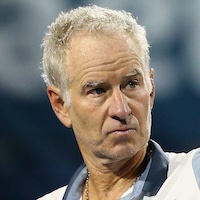
John Patrick McEnroe Jr. (born February 16, 1959) is an American former professional tennis player. He was known for his shot-making and volleying skills, in addition to confrontational on-court behavior that frequently landed him in trouble with umpires and tennis authorities.
McEnroe attained the world No. 1 ranking in both singles and doubles, finishing his career with 77 singles and 78 doubles titles; this remains the highest men’s combined total of the Open Era. He thus remains the only male player to win more than 70 titles in both the men’s singles and the men’s doubles categories. He won seven Grand Slam singles titles (four at the US Open and three at Wimbledon), nine Grand Slam men’s doubles titles (five at Wimbledon and four at the US Open), and one Grand Slam mixed doubles title (at the French Open). His singles match record of 82–3 in 1984 remains the best single season win rate of the Open Era.
McEnroe also excelled at the year-end tournaments, winning eight singles and seven doubles titles, both of which are records. Three of his winning singles year-end championships were at the Masters Grand Prix (the ATP year-end event) and five were at the World Championship Tennis (WCT) Finals, an event which ended in 1989. Since 2000, there has been only one year-end men’s singles event, the ATP Finals (the new name for the Masters Grand Prix). He was named the ATP Player of the Year and the ITF World Champion three times each: 1981, 1983 and 1984.
McEnroe contributed to five Davis Cup titles for the U.S. and later was team captain. He has stayed active in retirement, often competing in senior events on the ATP Champions Tour. He has also worked as a television commentator during the majors.
Career
As an 18-year-old amateur in 1977, McEnroe won the mixed doubles at the French Open with Mary Carillo, and then made it through the qualifying tournament at Wimbledon and into the main draw, where he lost in the semifinals to Jimmy Connors in four sets.
After Wimbledon in 1977, McEnroe was recruited by Coach Dick Gould and entered Stanford University, where, in 1978, he led the Stanford team to an NCAA championship, and also won the NCAA singles title. Later in 1978, he joined the ATP tour and signed his first professional endorsement deal, with Sergio Tacchini. He again advanced to the semifinals at a Grand Slam, this time the US Open, losing to Connors. Following which, he proceeded to win five titles that year, including his first Masters Grand Prix, beating Arthur Ashe in straight sets, as well as Grand Prix events at Stockholm and Wembley. His late-season success allowed him to finish as the number four ranked player for the year.
In 1979, McEnroe and partner Peter Fleming won the Wimbledon Doubles title, followed shortly by a win in the US Open Doubles. That same week, McEnroe won the men’s singles US Open title, his first Grand Slam singles title. He defeated his friend Vitas Gerulaitis in straight sets in the final to become the youngest male winner of the singles title at the US Open since Pancho Gonzales, who was also 20 in 1948. He also won the prestigious season-ending WCT Finals. McEnroe won 10 singles and 17 doubles titles that year.
At Wimbledon, McEnroe reached the 1980 Wimbledon Men’s Singles final—his first final at Wimbledon—where he faced Björn Borg, who was gunning for his fifth consecutive Wimbledon title. At the start of the final, McEnroe was booed by the crowd as he entered Centre Court following heated exchanges with officials during his semifinal victory over Jimmy Connors. In a fourth-set tiebreaker that lasted 20 minutes, McEnroe saved five match points and eventually won 18–16. McEnroe, however, could not break Borg’s serve in the fifth set, which the Swede won 8–6.
McEnroe exacted revenge two months later, beating Björn Borg in the five-set final of the 1980 US Open. He was a finalist at the season-ending WCT Finals and finished as the number 2 ranked player for the year behind only Borg. McEnroe again reached the Wimbledon men’s singles final in 1981 against Borg. This time, McEnroe prevailed in four sets to end the Swede’s run of 41 consecutive match victories at the All England Club. Borg and McEnroe had their final confrontation in the final of the 1981 US Open. McEnroe won in four sets, becoming the first male player since the 1920s to win three consecutive US Open singles titles. McEnroe also won his second WCT Final, beating Johan Kriek in straight sets and finished the year as the number one ranked player. He was named the Associated Press Athlete of the Year, the second men’s tennis player ever after Don Budge in the 1930s.
McEnroe lost to Jimmy Connors in the 1982 Wimbledon final. He was able to retain the ATP’s number 1 ranking based on points at the end of the year on the basis of having won significant events at Philadelphia, Wembley, and Tokyo, but due to Connors’s victories at the two most important events of the year (Wimbledon and the US Open), Connors was named the player of the year by the ATP and most other tennis authorities.
In 1983, McEnroe reached his fourth consecutive Wimbledon final. At the US Open, he was defeated in the fourth round, his earliest exit since 1977. He played at the Australian Open for the first time, making it to the semifinals before being defeated in four sets by Mats Wilander. He made the WCT Final for the third time and beat Ivan Lendl in an epic five-setter. He took the Masters Grand Prix title for the second time, again beating Lendl in straight sets. He also won major events at Philadelphia, Forest Hills, and Wembley, enabling him to capture the year-end number one ranking once again.
McEnroe’s best season came in 1984, as he compiled an 82–3 match record that remains the highest single-season win rate of the Open Era. He won a career-high 13 singles tournaments, including Wimbledon and the US Open, capturing the year-end number one ranking. He also played on the winning US World Team Cup and runner-up Davis Cup teams.
McEnroe was inducted into the International Tennis Hall of Fame in 1999. He is now a sports commentator at Wimbledon for the BBC in the UK. He also provides commentary at the Australian Open, US Open and lesser ATP tennis tournaments in the US on networks such as CBS, NBC, USA, and ESPN.
